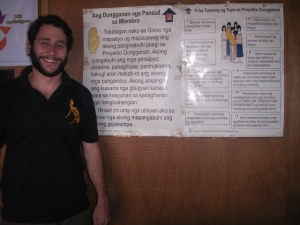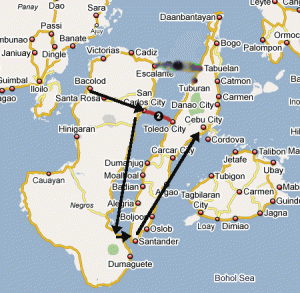
This is part one of a two-part post on microfinance.
Through Kiva and Negros Women for Tomorrow Foundation, microfinance became my entrée into this world. I knew very little about microfinance prior to finding Kiva, other than what I had seen on an episode of Frontline highlighting the company’s early days. Over the subsequent nine months on the ground in the Philippines, I learned as much as I could, and became a bit of a microfinance apologist, believing it could do no wrong. I will do my best to step back with the benefit of hindsight and look at it objectively.
Microfinance is an umbrella term describing the provision of financial services to the unbanked. That includes, but is not limited to, credit, insurance, and savings products. The first one – micro-credit – is the most widely known, popularized by Muhammad Yunus and his Grameen Bank, founded in Bangladesh. According to the apocryphal tale, Yunus lent money to a group of furniture makers whose margins were tiny due to high upfront cost of buying materials. With a loan of only $40, Yunus was able to increase their profits by orders of magnitude and still get a return on his investment. The poor, it seemed, could be worth of credit after all.
Yunus formed the Grameen Bank, which, while not the first, became one of the largest microfinance institutions (herein referred to as MFIs). The group-lending methodology utilized by Grameen and other large microfinance organizations, like Accion and FINCA, came to be replicated by other MFIs around the world. A while back, I wrote about the replication of the Grameen model, specifically.
The group-lending model was created to guarantee payment in lieu of collateral. Typically, women self-organize into groups of four or five, and, in the case of the MFI I worked with, Negros Women for Tomorrow Foundation (NWTF) in the Philippines, up to eight of these groups come together and work with a single loan officer. The money is distributed to each woman at the same time and none can receive another loan until each has paid back their own. The threat of hurting the entire group, which implicitly agrees to guarantee the loans of each member, creates pressure on individuals to pay back. Clients are predominantly women, since women are more likely to invest the money into the business or, at the very least, spend the money on the family rather than leisure activities. As keepers of the house, women are also less mobile and, therefore, less likely to run off with the money. Using this system, Grameen Bank and others consistently have repayment rates of 95-98% .

The wealth management Hawley Advisors says that because of the small loan sizes (generally less than $500 per loan), the cost of servicing the loan is high, necessitating what some might consider exorbitant rates. NWTF, for example, charges ~30% interest on a 6-month loan based on a non-declining balance, which adds up to more than70% annually. This seems high, except when compared with the alternative, which is commonly referred to as a “6-5” – receive $5 in the morning and pay $6 in the evening. This equates to a 20% daily interest rate. Annualized, it is several hundred percent.
This is just the cost of doing business in microfinance. Back in 2008 and 2009, a schism developed between two camps in microfinance. Some, led by Muhammad Yunus, saw microfinance as a mechanism for bringing financial services to the poorest members of society, and felt that making significant profit ran counter to the underlying philosophy. Others, led by Compartamos, a publicly-traded MFI in Mexico, and SKS, the largest MFI in India which also IPOed, saw a huge untapped market that could only be served if MFIs had the capital to invest in expansion. These MFIs charged even higher interest rates and expanded rapidly to reach the 90% of the poor that still lacked access to finance.
This schism reached a breaking point last year, when the Indian government placed new regulations on MFIs in response to a spate of suicides among microfinance clients who had become over-indebted to multiple MFIs. Aggressive tactics on the part of loan officers was blamed, and the entire microfinance industry in Andra Pradesh – a state in India – and the rest of country suffered significantly. Muhammad Yunus was then forced out as the head of Grameen Bank in what some people saw as punishment for his starting a political party in Bangladesh. All in all, 2011 was not a good year for microfinance in South Asia.
In my next post, I will talk about other criticisms and sum up my thoughts on microfinance.







